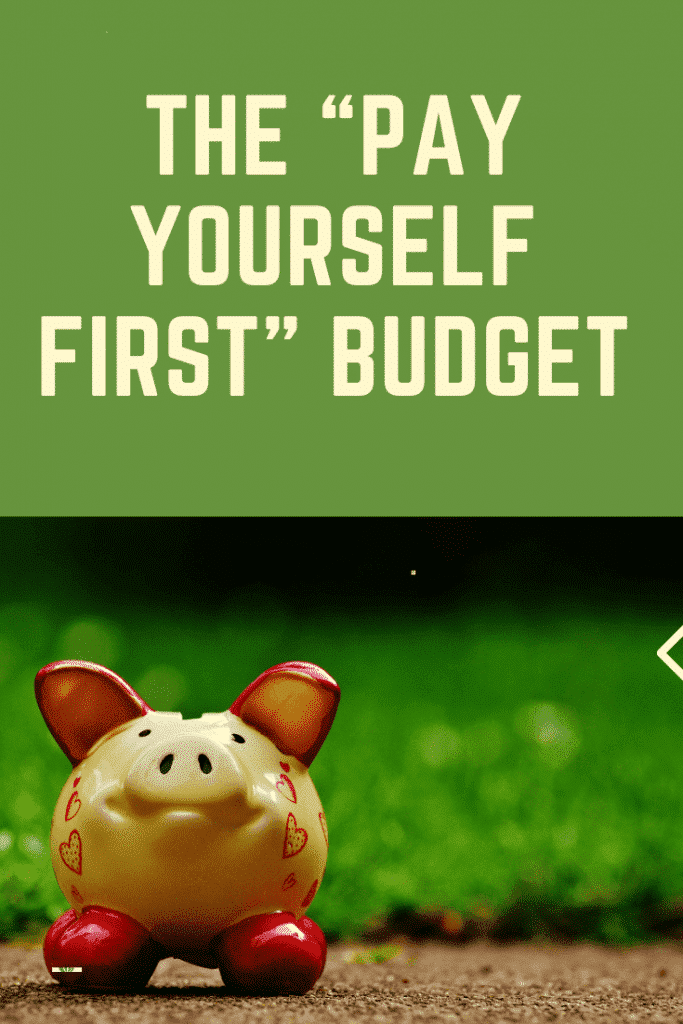A famous quote by Tony Robbins says, “Complexity is the enemy of execution.” We can all think of an area where this has been true in our lives. Take exercise, for example. Everyone has an opinion on the best workout routine. Some experts say cardio, others weight training.
Then there’s yoga and cross-fit and on and on. Before ever getting started, there’s so much information that many don’t even begin. But, can the same level of simplicity also allow you to pay off debt or invest without a budget? What if you took an approach to pay yourself first?
Humans are good at making things more complicated than necessary. The book, The One Thing by Gary Keller tells us to ask ourselves one simple question: “What’s the ONE thing I can do such that by doing it, everything else will be easier or unnecessary?” I find myself asking this question in many different aspects of my life, including personal finance.
If you read through most personal finance blogs, many will say that budgeting is essential for any financial game plan. I agree that some people need a budget to stay disciplined. However, with that being said, budgets can be complex for simple-minded people like me.
I’d much rather save my brain space for more exciting things than try to plan out if I need a haircut that month. The below approach explains how you can establish your financial life using the pay yourself first approach to budgeting.
Pay Yourself First Approach to Budgeting
Before starting to dig in, I note that this approach isn’t for everyone. If you live paycheck-to-paycheck with no savings and a lot of consumer debt, you may need to start with a strict budget for a while. In these types of situations, every dollar matters until you can build up a savings cushion.
The pay yourself first approach to budgeting is less precise. With anything less specific, it does leave more room for error. Having at least a few thousand dollars saved up in an emergency fund will allow you to manage unexpected month-to-month spending fluctuations.
When You Don’t Have to Use a Traditional Budget
Throughout our debt payoff journey, we never had a traditional budget. A conventional budget involves writing down your expected expenses every month and tracking them every month. In the Dave Ramsey world, this is the way to go. But, even without a budget, we could pay off $200,000 in debt in seven years. Now, I’ll fully admit that it might have helped us stay more focused if we did have a budget. But, of course, that would be dependent on if we stuck with it.
There’s a good chance we would have become frustrated with the constricting nature of a budget. I didn’t want to keep receipts, write down every charge, and feel guilty about buying the $5 frozen lemonade when at the zoo with the family. I’m also not sure how good it would have been for our marriage if I was nit-picking every purchase made by my wife (and vice-versa).
While I’ll admit several excellent budgeting apps are available that make this easier, I’m still not sure it would have been the right approach for us.
The Alternative: The “Pay Yourself First” or “Anti-Budget” Method
If you are in a situation where you do have some disposable income to save, invest, or pay down debt, then you can simplify the way you manage your finances every month. When we started, we called this the approach to pay ourselves first. The simple explanation is that we save and invest before we do anything with our money. That money comes right off the top before we do anything else.
The remaining money is then used to pay bills, other expenses, and discretionary purchases. We have been using this approach since 2011. Since then, the best name I’ve heard for this method is the “anti-budget,” with credit given to Paula Pant at AffordAnything.com.
Below is a step-by-step approach if you decide to use the Pay Yourself First approach to budgeting:
Step 1: Track Your Spending
Wait, what? Isn’t this just budgeting? Well, kind of. Here’s the thing, you have to set a baseline when you’re starting. You don’t have to do this forever, but track every dollar you spend for a month or two. Don’t change any behaviors at first. Just write it all down.
Having a baseline will allow you to determine the current gap between income and spending to develop a plan. In addition, you’ll know how much money is left over at month-end that can be attributed to investing and saving.
Once you get through a couple of months of tracking your spending, see if you’ve identified any opportunities where you think you can reduce expenses in the future. For example, maybe there is a gym membership that you’ve been paying for years, a Hulu Plus subscription you rarely watch, or you’ve realized how much money is going to restaurants every month. Do whatever you can to attribute at least some dollars to investing and saving once you get your anti-budget started.
Step 2: Automate Your Monthly Payments
Now that you’ve tracked spending for a couple of months and determined how much you can invest and save in a given month, it’s time to set up your automated payments. This will be the key to success if you use this approach. Of course, you won’t get this perfect at first, but getting started is the key.
The key to this step is to pull money immediately out of your primary checking account and move it to a savings or brokerage account. I will assume you get paid by direct deposit at some regular interval. This could be monthly, bi-weekly, twice a month, or maybe whenever you receive an invoice if self-employed. The more stable your income is every month, the better this approach will work.
Automating your finances allows you to hide money from yourself essentially. As silly as it may sound, the psychology of this is powerful. If you never see money in your account, you won’t find reasons to spend it. This approach also helps with lifestyle inflation. In addition, you don’t ever have to let that money hit your account if you get a raise. Instead, have it go straight to investments, savings, or debt paydown.
There are a few ways to get started with automating your finances. First, check if your employer will allow you to deposit money directly into a different account. Many employers will allow you to send as much or as little money to several other accounts. For example, you could have one as your primary checking, one as a savings account, and one as a college.
After paying yourself first, it’s now time to automate your bills. I know there are many of them, including heating, cooling, water, sewer, insurance, phone, internet, daycare, groceries, credit cards, student loans, mortgage, gasoline, etc. Where you can, automate payments to immediately pay bills as soon as the money hits your checking account. This may take a few months to sort out when getting started.
For bills that don’t fall on the date you get paid, you can hold back and wait until the next payday to make the payment. However, for expenses that don’t have a precise pay date, such as groceries, consider immediately taking the money out of your account and putting it in an envelope.
The key here is to get any regular expenses out of your bank account as soon as possible.
Step 3: Spend the rest
Many individuals do not have the luxury of saving/investing, paying bills, and then having extra spending money. This method will require that you have a gap in your income and spending.
When you first start, you may not have much if anything in the “saving/investing” or “spend the rest” category. However, as you pay down debt, reduce expenses, or increase your income, you will start to widen the gap between income and expenses.
As our family’s income has increased, we have put 80-90 percent towards our debt payments and 10-20 percent towards “spending the rest” (otherwise known as lifestyle inflation). Therefore, to build wealth, you continually look for opportunities to save more than you earn and eventually invest the difference.
This gives us the freedom to spend the remaining money on whatever we want, guilt-free. After a few days of getting paid, we usually know exactly how much we have left to spend on everything else, including outings with the kids, trips to the hardware store, convenient store purchases, and various other smaller purchases. This is referred to as fun money; we’re just getting to the number differently.
This inexact approach can sometimes lead to vague results. This is where an emergency fund or savings cushion comes into play. But, again, if you don’t have a buffer, then you’ll need a detailed budget for a while.
Paying Off Debt Without a Budget
Over the last seven years, we used the pay yourself first or anti-budget approach to pay off all our debt, including the mortgage. I’m not suggesting that this approach will work for everyone. In fact, given the depressing statistics regarding the number of individuals who live paycheck-to-paycheck, this approach may not work for most.
However, for others, simplicity may keep you in the game for longer. If you are struggling with the complexity of a budget, consider paying yourself first and then automating your bills and other expenses. We realized early on our pilgrimage that budgeting wasn’t for us.
It felt too constricting, and we didn’t want to feel guilty every time we decided to go out to eat, got a haircut, or made a small impulse purchase. As long as we have money in our account after paying ourselves and expenses, we should be able to spend the rest guilt-free even without a budget.

Mark is the founder of Financial Pilgrimage, a blog dedicated to helping young families pay down debt and live financially free. Mark has a Bachelor’s degree in financial management and a Master’s degree in economics and finance. He is a husband of one and father of two and calls St. Louis, MO, home. He also loves playing in old man baseball leagues, working out, and being anywhere near the water. Mark has been featured in Yahoo! Finance, NerdWallet, and the Plutus Awards Showcase.



No budget for us either! I’ve started one so many times in the past but tracking spending closely has produced way better results than any budget I’ve ever attempted to use.
Glad I’m not the only one! Do you pull money out for savings right away or wait to see what’s left at the end?
More take it out in little chunks throughout the month. I got into that habit when paying off my student loans as fast as possible and the habit kind of stuck.
Micro managing finances can be counterproductive. It doesn’t take an actuary to find out if more money is going out the door than coming in. Congratulations on paying off the debt and you’re one step closer to financial freedom 🙂
Thanks and I agree. Some need the micromanaging to be successful. Others are turned off by it. I just like simplicity and have found an approach that seems to work for us.
Have you ever considered using Mint.com to help track your spending? I use the site and it’s very helpful to understand were my money is going each month.
I have thought about it, but there’s something that makes me uneasy about sharing so much personal information with one site. I already use e-banking and many other apps so it’s probably not much different, but I don’t like giving access to my banking and credit card accounts. Just a personal preference.
We do this but I consider what I call the “hammer and anvil” approach.
The non-negotiable is that we knock out 401ks, HSA, and IRAs.
Then we can get a little loose with the things we care about like holiday spending and family trips. But the latter only comes if we stick to a decent budget.
I like this term! Never heard of it. We are working our way up to maxing all tax advantaged retirement account. 2019 will be the first year we max out our 401k and I’m excited that next year my employer will be offering a HSA. These will be our priorities moving forward along with maxing one or two IRAs.
I do something very similar. I don’t see the point in tracking spending. It just bogs you down and takes too much time! Keep it simple and you will see results!
I agree with keeping it simple! Tracking spending is important when first starting out so you have a benchmark, but once you have a little space this approach is much simpler.
Love this approach, especially because it’s so flexible. If you find yourself willing to save more and “wasting” money on things you don’t value at the same time, then you can up the ante. I’m not a traditional budget person and think this is a really interesting approach.
Thanks! It’s worked great for our family over the years. Let me know if you end up giving it a try!